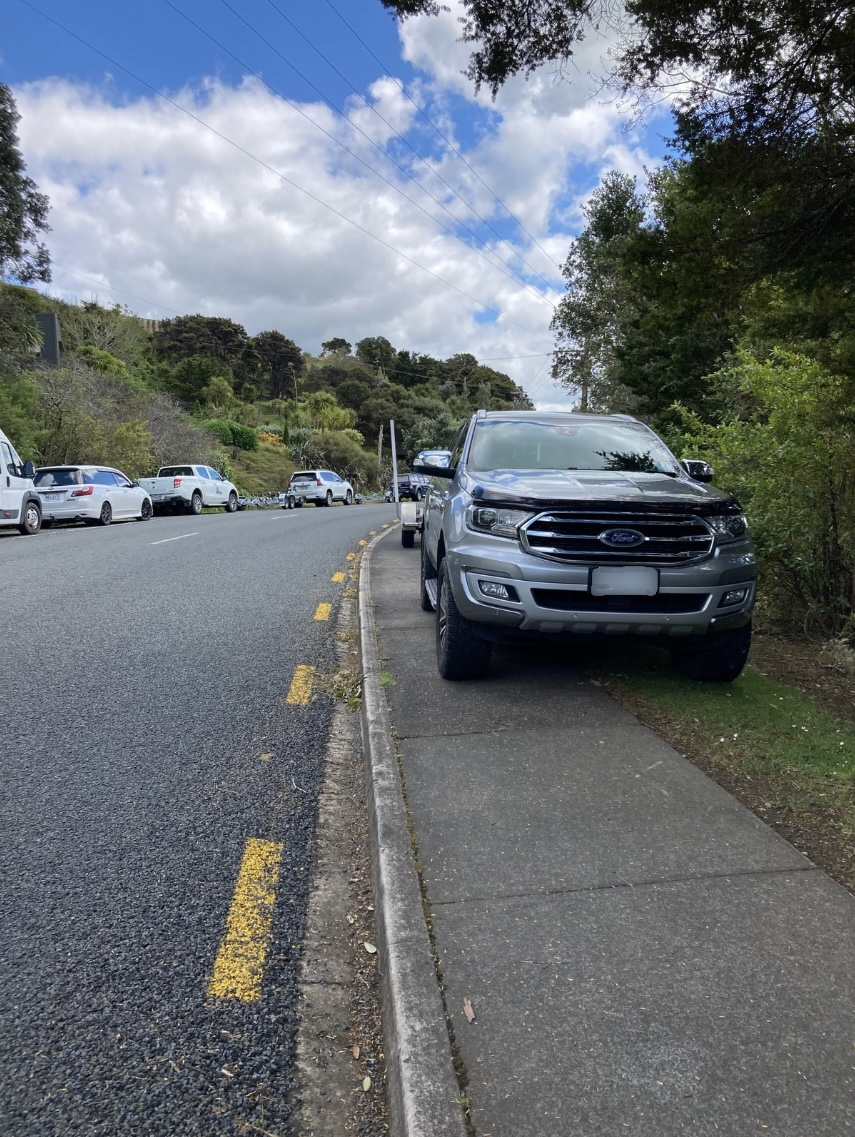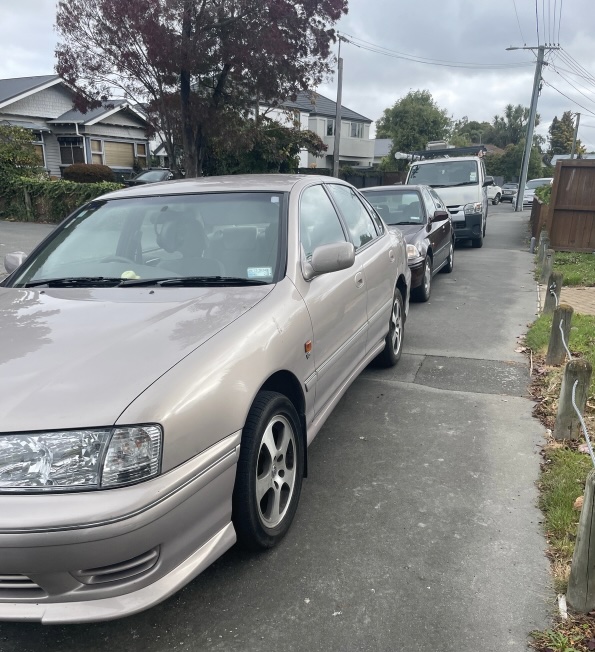Parking on and over footpaths is inconsiderate and illegal (Land Transport (Road User) Rule 2004 6.14). This year Living Streets is upping its efforts to decrease the incidence of motor vehicles being parked on footpaths–something that happens far too frequently. Our campaign to address footpath parking has three main strands.
First, we are planning to raise public awareness that it is illegal and inconsiderate to park over footpaths, even 'just a little bit' and even for 'just a minute'. Many footpaths are already narrow and people in wheelchairs, using mobility scooters or pushing prams can be forced onto the road or soggy grass to get by. Sometimes it makes it too dangerous or impossible. Children who are forced to go onto the road don't always think to look for traffic so it can be especially dangerous for them. And footpath parking makes it very hard for members of our community who are blind or have low vision who often rely on certain routes with which they are familiar being obstacle-free. People with cognitive processing difficulties, such as people who have had strokes or suffer from degenerative brain conditions may also struggle to cope.
You can help with this aspect by writing letters to the editor of your local paper or sending LSA a description of your footpath parking experience at comms@livingstreets.org.nz. For example, the issue of footpath parking was recently covered in The Post and discussed on The Panel. Emphasising the effects that parking on footpaths has on other people is a good angle along with calling for people to be more considerate and for councils to more effectively enforce the law.
And you can also help by reporting motor vehicles parked over footpaths to your local council every time you see it. If they don't know about it occurring, they can't enforce the law. Some councils have apps such as SnapSendSolve, Antenno, and FixIt, that make reporting easy. Even if it doesn’t result in a response, it will have raised awareness or reminded people of what the law is.
Second, we are trying to get Councils, the Police and others to remind people of the law concerning parking on footpaths and the reason for it. Most don't put any effort into education about footpath parking except by way of enforcement. A few issue warnings that sometimes have the desired effect, but people's memories seem short and on-going educational efforts are needed. Porirua City Council sets a good example and has taken a proactive approach for several years. Besides active media work, they also use a team of wardens to visit every street and warn people who park over and on footpaths and fine reoffenders. It has had a positive effect and footpath parking is much less common than it was.
 The third strand of the campaign is to try to get Councils to issue fines for parking over footpaths on the basis of photographs sent to them by members of the public. A small number already do so (e.g. Hastings District Council) but most require a parking warden to go to the location of the illegal parking to see it in person. Now that most people carry cell phones capable of taking and transmitting photos with GPS location embedded, there is no need for wardens to have to be there in person. The Land Transport Act 1998 (when cellphones were still like small bricks) simply says that:
The third strand of the campaign is to try to get Councils to issue fines for parking over footpaths on the basis of photographs sent to them by members of the public. A small number already do so (e.g. Hastings District Council) but most require a parking warden to go to the location of the illegal parking to see it in person. Now that most people carry cell phones capable of taking and transmitting photos with GPS location embedded, there is no need for wardens to have to be there in person. The Land Transport Act 1998 (when cellphones were still like small bricks) simply says that:
139 (1) If an enforcement officer has reasonable cause to believe an infringement offence is being or has been committed by a person, an infringement notice in respect of that offence may be issued to that person by an enforcement officer.
We believe having photos showing the offence and registration plate of the vehicle and meeting certain other criteria is sufficient for parking wardens to have 'reasonable cause to believe'.
Most Councils have too few parking wardens to effectively enforce the law across their whole city. Most only enforce the law during office hours around the CBD, other shopping areas and a few hotspots like near hospitals. Some also have a roving warden to respond to complaints outside those areas. This is inadequate to create an effective deterrent as people know that the chance of getting caught for footpath parking in most regions is low.
Using photos sent in by members of the public would also help solve the resourcing problem. We are hoping more councils will throw off the shackles of tradition and adopt this modern method of managing their infrastructure to make the lives of pedestrians that much better.
